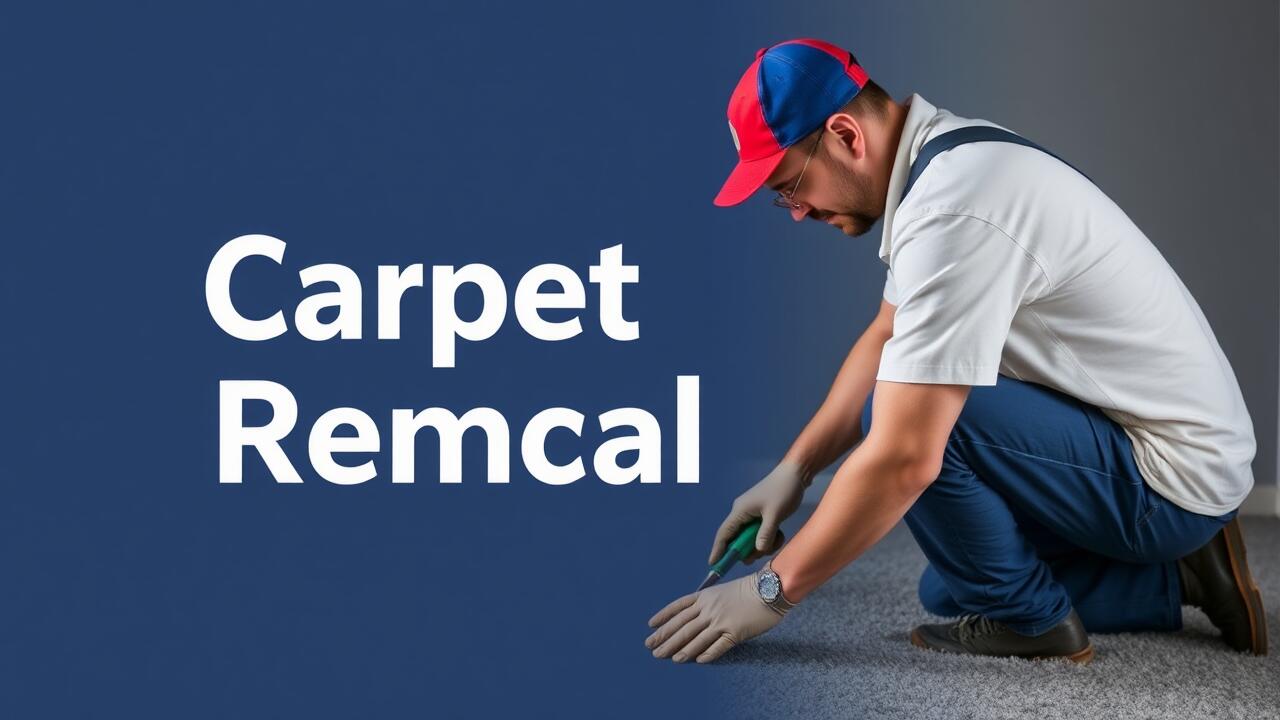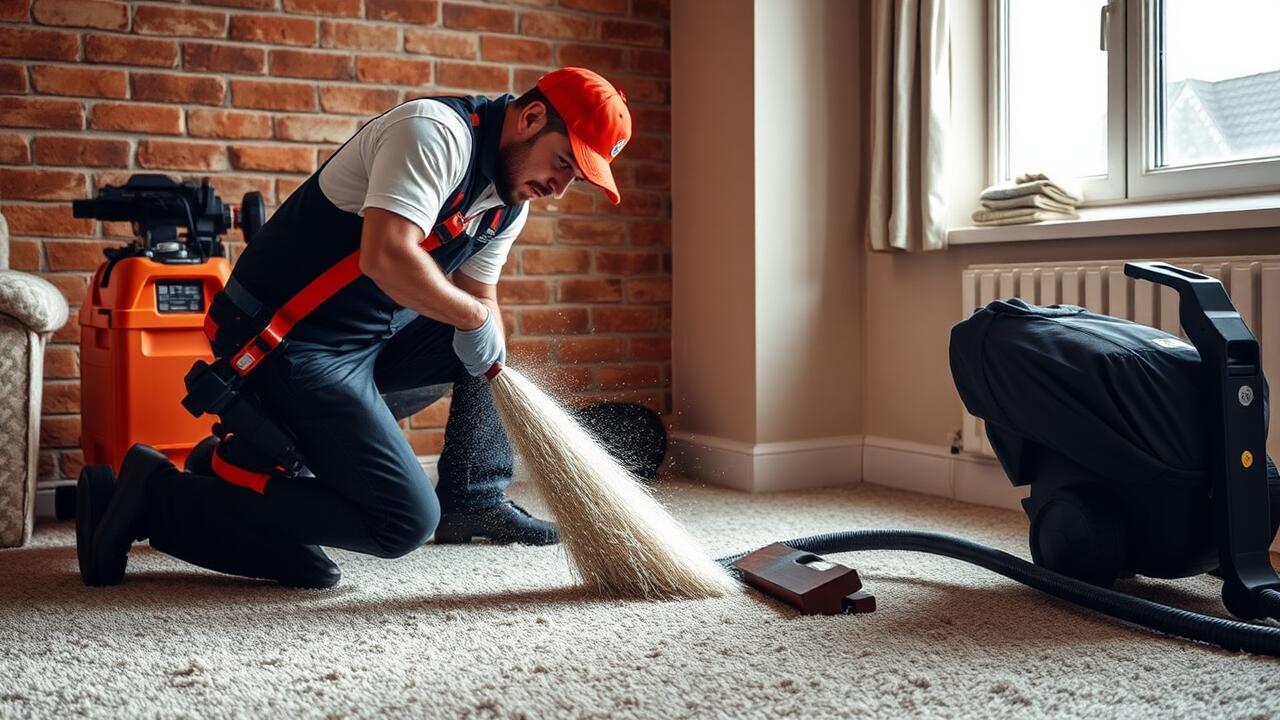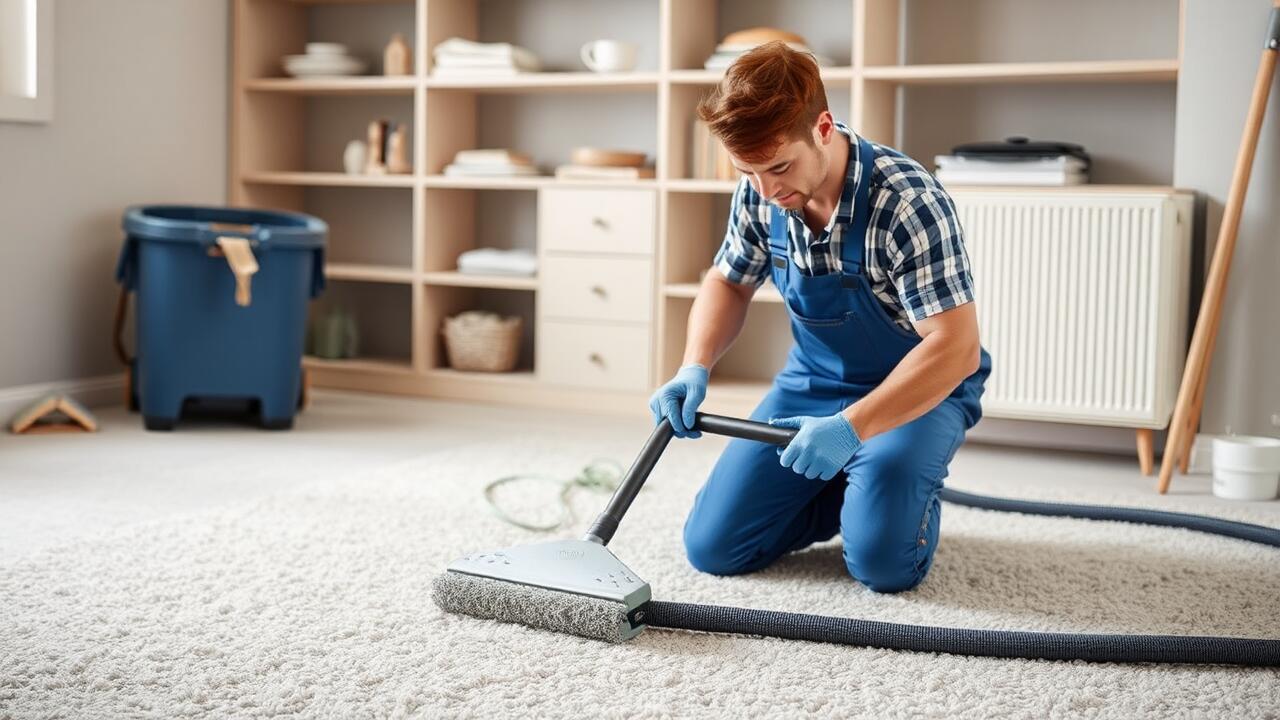
Dealing with Adhesive Residue
Removing carpet from concrete floors often leaves behind adhesive residue that needs addressing for a clean finish. One effective method for dealing with this residue is to use a strong adhesive remover, which is designed to break down the bond of the old adhesive. Apply the remover according to the manufacturer's instructions, ensuring to cover the affected areas thoroughly. Allow it to sit for the recommended time, which helps in loosening the residue, making it easier to scrape away.
After using the adhesive remover, it is essential to clean the surface properly. Once the residue has been scraped off, wash the area with a mixture of warm water and mild detergent. Scrubbing with a stiff brush can help in removing any remaining bits of adhesive. For those in need of professional assistance, services like Carpet Removal Phoenix can offer expert help in eliminating these stubborn residues, ensuring a smooth surface for any future flooring projects.
Cleaning the Surface
Once the carpet has been removed, cleaning the surface becomes essential to ensure a smooth and clean foundation for any future flooring. Start by sweeping or vacuuming the concrete floor to eliminate loose dirt and debris. This initial step helps prevent scratching the surface during the deeper cleaning process. For stubborn stains or residues, mopping with a suitable cleaning solution may be necessary. A mixture of warm water and a few drops of dish soap can effectively tackle grime and soften any remaining adhesive.
After mopping, it’s important to rinse the surface thoroughly with clean water. This step removes any soap residue that could affect the adhesion of new flooring materials. For those in need of professional assistance, Carpet Removal Estrella, Phoenix, offers services to help ensure that the cleaning process leaves the concrete in optimal condition. Following these steps prepares the concrete floor for inspection and potential repairs, ultimately leading to a successful new flooring installation.
Inspecting the Concrete Floor
After removing the carpet, it’s crucial to inspect the concrete floor for any signs of damage. Look for cracks, chips, or uneven areas that may have been hidden beneath the carpet. These imperfections can affect the overall appearance and longevity of the floor, necessitating repair. A thorough inspection ensures that any issues are identified before proceeding with further steps.
In certain cases, a more detailed examination may be required, especially if the floor will take on a new finish or coating. Areas with water damage should be addressed immediately to prevent further deterioration. Carpet Removal Phoenix professionals often recommend documenting any damage you find, as this can help in planning the repairs needed for a smooth and lasting surface. Taking the time to assess your concrete will lead to a better end result.
Checking for Damage
After removing the carpet, examining the concrete floor is crucial to identify any damage that may have occurred during the process. Look for signs of chipping, cracks, and uneven surfaces. These issues can affect the overall appearance and functionality of the flooring. If any damage is noticed, it can complicate the installation of new flooring or simply diminish the aesthetic appeal of the space.
Inspections should be thorough, as even minor imperfections can lead to bigger problems down the line. If you're not confident in your ability to assess the condition of the concrete adequately, consider reaching out to professionals. Companies like Carpet Removal Estrella, Phoenix offer expertise in both carpet removal and subsequent floor inspections. Their trained staff can assist in identifying damage that might be overlooked by untrained eyes.
Repairing the Concrete
Repairing the concrete floor is essential after removing carpet, especially if any damage occurred during the removal process. Start by assessing the entire surface for any cracks or holes that may need attention. Use a wire brush to clean out these areas thoroughly, ensuring that loose debris does not interfere with the repair. It is also helpful to vacuum the area for a cleaner surface. The right products can make a significant difference, so consider using a quality concrete patch or filler that’s suitable for the specific type of damage.
Once the surface preparation is complete, it’s time to fill in the cracks and holes. Apply the concrete patching compound according to the manufacturer's instructions. Use a putty knife or trowel to smooth the compound evenly over the surface. Allow the patch to cure fully before proceeding with any further work on the concrete floor. If you are seeking professional assistance for this process, Carpet Removal Phoenix can provide the necessary expertise to ensure a smooth and durable repair.
Filling in Cracks and Holes
Filling in cracks and holes is essential for ensuring a smooth and even surface after carpet removal. Start by cleaning the affected areas to remove any dust, debris, or loose material. A wire brush or vacuum can be helpful in this step. Once the area is prepared, choose a concrete patching compound suitable for your floor's characteristics. Apply it carefully to the cracks and holes, making sure to press it into the gaps. Smooth the surface using a putty knife, ensuring it is level with the surrounding area.
After applying the patching compound, allow it to cure as per the manufacturer's instructions. Curing times may vary, often taking a few hours to a couple of days. Once cured, sand the patches lightly to create a seamless finish. Completing this step will significantly enhance the look of your concrete floor, making it suitable for any future projects, including new flooring installation. For those in need of further assistance with the process, consider seeking professional help through services like Carpet Removal Phoenix.
FAQS
What tools do I need to remove carpet from concrete floors?
To remove carpet from concrete floors, you'll need a utility knife, a pry bar, a floor scraper, a hammer, and possibly a heat gun for adhesive removal.
How do I deal with adhesive residue after removing the carpet?
You can deal with adhesive residue by using a floor scraper, adhesive remover, or a mixture of hot water and vinegar. Scrub the area thoroughly and rinse with clean water.
What should I check for when inspecting the concrete floor?
When inspecting the concrete floor, check for any cracks, holes, or signs of damage, such as unevenness or spalling. This will help you determine if repairs are needed.
How can I repair cracks and holes in the concrete?
You can repair cracks and holes by using concrete patching compound. Clean the area first, then fill in the cracks and holes according to the product instructions, smoothing it out for a flush finish.
Is it necessary to repair concrete floors before installing new flooring?
Yes, it's essential to repair concrete floors before installing new flooring to ensure a smooth and stable foundation, which will enhance the longevity and appearance of the new flooring.




